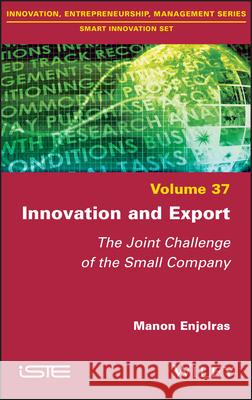Innovation and Export: The Joint Challenge of the Small Company » książka
topmenu
Innovation and Export: The Joint Challenge of the Small Company
ISBN-13: 9781786306203 / Angielski / Twarda / 2021 / 192 str.
Innovation and Export: The Joint Challenge of the Small Company
ISBN-13: 9781786306203 / Angielski / Twarda / 2021 / 192 str.
cena 708,31 zł
(netto: 674,58 VAT: 5%)
Najniższa cena z 30 dni: 602,56 zł
(netto: 674,58 VAT: 5%)
Najniższa cena z 30 dni: 602,56 zł
Termin realizacji zamówienia:
ok. 30 dni roboczych
Bez gwarancji dostawy przed świętami
ok. 30 dni roboczych
Bez gwarancji dostawy przed świętami
Darmowa dostawa!
Kategorie:
Kategorie BISAC:
Wydawca:
Wiley-Iste
Język:
Angielski
ISBN-13:
9781786306203
Rok wydania:
2021
Ilość stron:
192
Waga:
0.45 kg
Wymiary:
23.39 x 15.6 x 1.27
Oprawa:
Twarda
Wolumenów:
01











